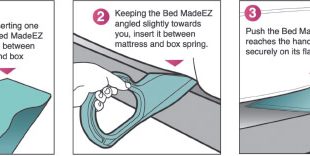By Mitchell Ghen, D.O., Ph.D.
 Do you wait to get sick like most do, or would you like to begin to understand the workings of cellular medicine so you can prevent disease. We are 100 to 200 trillion cells according to all of the textbooks of biochemistry and physiology. We survive and thrive by certain vitamins and nutrients that are present in proper amounts at a cellular level. Most believe that we get enough of these nutrients from the foods that we eat and perhaps a multiple vitamin. But the thought is naïve and far from the truth. Many studies have clearly shown that the American diet for the most part is unable to keep up with the specific needs of our massive working at a cellular level. For that reason the concept of using intravenous nutrition becomes extremely attractive. Some believe especially those that do not do intravenous nutrition that oral supplementation is enough. But, on our best day perhaps 30 to 40% of what we eat is absorbed.
Do you wait to get sick like most do, or would you like to begin to understand the workings of cellular medicine so you can prevent disease. We are 100 to 200 trillion cells according to all of the textbooks of biochemistry and physiology. We survive and thrive by certain vitamins and nutrients that are present in proper amounts at a cellular level. Most believe that we get enough of these nutrients from the foods that we eat and perhaps a multiple vitamin. But the thought is naïve and far from the truth. Many studies have clearly shown that the American diet for the most part is unable to keep up with the specific needs of our massive working at a cellular level. For that reason the concept of using intravenous nutrition becomes extremely attractive. Some believe especially those that do not do intravenous nutrition that oral supplementation is enough. But, on our best day perhaps 30 to 40% of what we eat is absorbed.
Under most circumstances of age, gender, medications-such as proton pump inhibitors, Coumadin, corticosteroids, birth-control pills, and a sundry of other medicines, the absorption may be as low as 5% absorption. I am amazed at the number of physicians that I am now training on the use of intravenous nutrition. Physicians that years ago I would have never believed that such a treatment would make such a significant impact on their patients’ health with all sorts of acute and chronic diseases. As the author of the only textbook on IV nutrition and the trainer of thousands of physicians a year the tide has already changed and the recognition of IV nutrition is taking it’s rightful place as a serious treatment modality.
Few things hold as much fascination as the early history of nutrition. So much has been learned in the last 50 to 100 years and most of it in the last 20 years. We now understand that our guts are not healthy to ensure proper nutrient absorption and that nutrition from either food or supplements was unable to keep up with the body’s needs through the oral route only. Pretty much malabsorption became an integral part of the aging process especially as we became 40 or older. In 1628 Harvey found the blood circulates from the arterial to the venous system which set the stage for experimentation with IV infusions of wine, ale and opiates into a dog. Part of the early experimentation involved blood transfusions occurring between different species like those from a sheep to a man. And although these discoveries were made in the 1800s and early 1900s the complete IV nutritional therapy methods as known today only became available to modern medicine in approximately the last 50 years. The rationale for the use of IV nutrition became obvious very quickly. Bypassing the regular digestive system is a quick and easy way to provide the direct absorption of important nutrients into the bloodstream. One of the dilemmas, by the way, that modern medicine has always been struggling with. Obviously, many nutrients, antibiotics and other life-saving medications can be given very quickly intravenously to obtain blood levels that are therapeutic. Similar when we use IV nutritional vitamins and minerals we can get blood levels that are far superior to any oral product in the world. To enhance the patient’s health – the one that is already sick or people just trying to maintain good optimal health, the IV route provides the nutrients that are needed rapidly. Patients experience a quick onset of energy, mental brightness, and dissolution of fatigue. Most have agreed that the year 1968 initiates the development of serious nutrition intravenous therapies. In 1982, a study in Chicago showed the cancer patients had a better chance of surviving major operation and drug or radiation therapy if their nutrition was improved through IV therapy before during and after treatment. As a biological system the human body is constantly repairing injury to itself from free radicals, chemical attacks, radiation and pollution damage. These injuries must be repaired to maintain optimal health.
The most pronounced aspects of IV nutrition are in addressing malabsorption and malnourishment-two things that are extremely prevalent in our aging population. Common complaints such as diarrhea, cramping, bulky stools, flatulence and other digestive problems lend itself to the IV repletion route. Malabsorption left unchecked leads to emotional disturbances, as well as symptoms of anxiety and depression along with stunted growth, retardation and even brain damage. Malnutrition differs from malabsorption in that it is defined as a condition that develops when the body does not get the right amount or balance of nutrients. When one thinks of malnourishment it readily brings up images of the severely malnourished children of Third World countries but malnourishment can also occur at much lower and also a more subtle malnutrition. For many it’s just due to fad diets or other poor nutrition regimen.
The natural process of aging or senescence decreases the efficiency of the natural repair mechanisms. Regenerative medicine is the attempt to aid this restoration and the naturalprocess of renewal. The combination of benefits produced by proper diet, nutritional supplements, and regenerative medicine provide a powerful rationale for the development and use of IV nutritional therapy. With this in place you can understand that inflammation, immune system support, weight loss, fatigue and pain syndromes, cancer support treatments, rehydration, and general well-being are significantly enforced by the use of intravenous therapies. In part two of IV nutritional therapies, we will discuss what are the components of these IV’s, the efficacy of such components, and the proper IV for specific individual depending upon disease state. Be aware that malnutrition begins with subtle changes of our blood chemistry and physicians trained to recognize these subtle but serious changes could have a profound effect on your life span as well as the quality of life. Regardless of diet all diseases contribute to our malnutrition including but not limited to inflammatory bowel disease, irritable bowel syndrome, infection, autoimmune disease is, cancer, arthritis, and of course pre-and post surgical complications.
Dr. Mitchell Ghen
The Doctor’s Doctor Consultant to Physicians Worldwide
561. 508. 3095
 South Florida Health and Wellness Magazine Health and Wellness Articles
South Florida Health and Wellness Magazine Health and Wellness Articles




